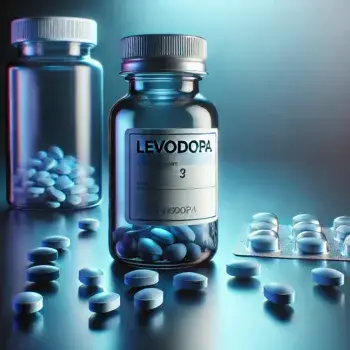
7 Myths About Carbidopa/Levodopa
Research shows that levodopa is safe for patients with Parkinson’s disease. Studies since 1969 found that patients lived longer after starting the treatment. A major trial funded by the NIH investigated concerns about levodopa’s safety. This trial compared long-term treatment with carbidopa/levodopa to a placebo over 40 weeks. The results eased fears about it, confirming that it does not speed up the neurodegeneration linked to Parkinson’s disease. Overall, levodopa is considered safe for long-term use.
Myth 1. Better reserve it for future use
Parkinson’s disease is a long-term condition that develops slowly over many years. It often begins with issues like sleep problems, constipation, or loss of smell, and later progresses to motor symptoms. These motor symptoms appear only after a significant loss of dopamine-producing cells in the brain.
Myth 2. It Ceases to Be Effective After Several Years
In Parkinson’s Disease (PD), levodopa does not lose its effectiveness. However, the way the body responds toit, it evolves as PD advances. Initially, the response to it, it is sustained, gradually increasing over a week with a consistent dosage (known as the long-duration effect). As time goes on, the positive effects become somewhat tied to each individual dose, referred to as the short-duration response, which can result in wearing-off phenomena.
Myth 3. Restrict Levodopa dosage to prevent future dyskinesia
Dyskinesia, which is involuntary movement is linked to the amount of the drug taken.
When levodopa was first used in the 1960s, dyskinesia was common early in treatment. Nowadays, it is less frequent in the early stages.
The risk of dyskinesia is also related to the patient’s age. Reducing the dose can often prevent dyskinesia.
Myth 4. Restrict Levodopa dosage to prevent future fluctuations
Patients may experience short periods when levodopa seems ineffective, leading them to think it no longer works. It may only work for a few hours after each dose.
To manage this, it is important to find the right dose that gives the best results and to take it at times that match how long it works.
Myth 5. Dopamine agonist medications are almost as effective as Levodopa
In the U.S., two oral dopamine agonists, pramipexole and ropinirole, have been suggested as alternatives to levodopa. Some patients may find enough relief from these drugs to delay starting levodopa for a few years. However, the benefits are usually not as strong as those from levodopa.
Myth 6. Carbidopa/Levodopa must be consumed alongside meals
Over fifty years ago, it was established that the nausea associated with levodopa monotherapy is a result of the early conversion of levodopa to dopamine in the bloodstream.
To ensure an optimal response, carbidopa/levodopa should be taken at least one hour before meals and no less than two hours after finishing a meal.
To prevent a diminished effect of levodopa, it is recommended that all patients adhere to the guideline of avoiding food for at least one hour after taking it and waiting a minimum of two hours post-meal before taking another dose.
While this may be inconvenient, it is far less troublesome than experiencing a blocked or reduced response to levodopa. Some patients may find they can slightly adjust this timing and still achieve its full effect.
However, if patients choose to modify these guidelines, they should first follow the empty stomach recommendation to establish a baseline.
Myth 7. Carbidopa/Levodopa Disrupts Sleep Patterns
Insomnia is a common issue, and when it occurs in the context of Parkinson’s Disease (PD), it is often linked to difficulties in finding comfort in bed due to parkinsonism symptoms, such as akathisia, trouble turning over, and stiffness.
Taking a full dose of carbidopa/levodopa one hour before bedtime may help facilitate better rest. The term full dose refers to the amount that has been determined to provide the most effective response during the day.
Source